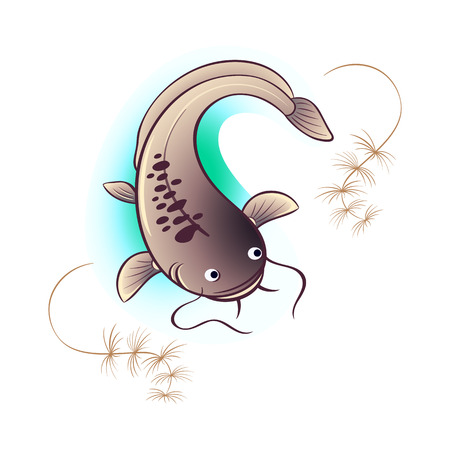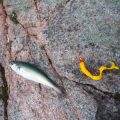Introduction to Night Surf Fishing
Night surf fishing is an exciting and rewarding pursuit that has captured the passion of anglers across the United States. As the sun sets and crowds leave the beach, the shoreline transforms into a quieter, more mysterious environment teeming with nocturnal fish activity. For many American anglers, night surf fishing offers not only the chance to escape daytime heat and busy beaches but also a unique opportunity to target species like striped bass, snook, redfish, and sharks that are more active after dark. However, this thrilling experience comes with its own set of challenges—from navigating darkness and shifting tides to ensuring personal safety in less visible conditions. Successfully fishing the surf at night requires specialized gear, heightened awareness, and an understanding of best practices unique to nighttime angling. Whether you’re a seasoned pro or a newcomer eager for adventure, mastering night surf fishing opens up a world of possibilities along America’s diverse coastlines.
Essential Gear for Night Fishing
When it comes to night surf fishing along American coasts, having the right gear is crucial for both success and safety. The following table outlines recommended equipment to ensure a productive and enjoyable experience after dark:
| Gear Type | Recommended Features | Why It Matters at Night |
|---|---|---|
| Rods | 10-12 ft surf rods, medium-heavy action | Longer rods cast farther over breaking waves; sturdy build handles large fish |
| Reels | Saltwater spinning or conventional reels with smooth drag system | Smooth drag ensures control during powerful runs; corrosion resistance is essential for saltwater use |
| Line | Braided line (30-50 lb test) with fluorocarbon leader | Braided line offers high sensitivity and strength; fluorocarbon leaders are nearly invisible in low light |
| Tackle | Pyramid sinkers, circle hooks (size 2/0-6/0), glow beads, bait clips | Pyramid sinkers hold bottom in surf; circle hooks improve catch rates; glow beads attract fish at night |
| Lighting | Headlamps with red or green LED, waterproof flashlights, lanterns, rod tip lights | Hands-free lighting preserves night vision and helps with rigging; rod tip lights signal bites in the dark |
| Specialized Equipment | Tackle backpack, sand spikes, insulated bait bucket, reflective tape, first aid kit | Organizes gear for quick access; sand spikes secure rods; reflective tape and first aid enhance safety |
Additional Night Fishing Essentials
Don’t forget extra batteries for your lighting devices and a reliable GPS or smartphone app for navigation. Wear weather-appropriate clothing—layering is key on chilly coastal nights—and always pack a windbreaker or rain jacket. For added comfort and safety, consider wading boots with good traction and a personal flotation device (PFD), especially if you’re fishing near jetties or rocky areas.
![]()
3. Safety Tips and Precautions
Night surf fishing can be an exciting adventure, but it’s crucial to prioritize safety. Here are essential tips to ensure you stay safe while enjoying your time on the shore:
Personal Safety Gear
Wearing the right gear is non-negotiable when fishing at night. Make sure you have:
| Gear | Purpose |
|---|---|
| Headlamp or LED flashlight | Keeps your hands free and improves visibility in the dark |
| Reflective vest or tape | Makes you visible to others, especially vehicles or other anglers |
| Non-slip wading boots | Prevents slips and falls on wet rocks or sand |
| PFD (Personal Flotation Device) | Adds a layer of safety if you’re wading in deeper waters |
| First aid kit | Allows quick response to minor injuries |
Awareness of Tides and Currents
Tides and currents can change rapidly, especially at night. Always:
- Check local tide charts before heading out.
- Avoid unfamiliar spots with strong currents or drop-offs.
- Pay attention to rising tides that can trap you against cliffs or jetties.
- If possible, fish with a buddy for added security.
Communicating Your Plans
Before you hit the beach, let someone know where you’ll be and when you expect to return. In case of emergency, this information can be vital. Bring a fully charged cell phone in a waterproof pouch and consider using location-sharing apps for added peace of mind.
Quick Reference: Night Surf Fishing Safety Checklist
| Action | Status (Check Before Leaving) |
|---|---|
| Packed personal safety gear | ☐ |
| Tide and weather checked | ☐ |
| Brought a first aid kit and cell phone | ☐ |
| Told someone your plans/location | ☐ |
| Fishing with a buddy (if possible) | ☐ |
By following these safety guidelines, you can focus on catching fish and enjoying the unique experience of night surf fishing along America’s coasts.
4. Best Spots and Timing
Finding the right location and timing is crucial for a successful night surf fishing trip along Americas coastlines. Productive spots often include areas near jetties, piers, sandbars, or cuts in the surf where baitfish gather and predators hunt. Look for deep troughs close to shore, rocky outcroppings, and points where currents converge. Use local knowledge or consult with nearby tackle shops for up-to-date information on hot spots in your area.
Understanding Tides
Tidal movement significantly impacts fish activity at night. Generally, the two hours around high tide and low tide are most productive because fish move closer to shore to feed. Some species prefer an incoming tide, while others bite best during outgoing tides. Check local tide charts before heading out and plan your sessions accordingly.
Moon Phases and Feeding Times
The moon’s brightness and phase influence how active fish are at night. Many anglers find that a full moon increases visibility for both predators and baitfish, sometimes making fish more cautious. Conversely, during a new moon or darker nights, predatory fish may hunt more aggressively. Use the table below as a general guideline:
| Moon Phase | Fish Activity Level | Recommended Approach |
|---|---|---|
| New Moon (Dark) | High | Lure or bait with strong scent/action |
| Quarter Moon | Moderate | Try natural baits; focus on structure |
| Full Moon (Bright) | Variable | Downsize tackle; fish deeper channels |
Prime Feeding Windows
Many saltwater species are most active at dusk, dawn, and during tide changes. At night, feeding peaks typically align with tidal shifts and moonrise or moonset. Apps like Fishbrain or Solunar tables can help you pinpoint ideal times based on location and season.
Quick Tips for Spot Selection & Timing:
- Scout locations during daylight for safety and familiarity.
- Avoid crowded beaches; stealth is key for night fishing.
- Monitor weather and surf conditions – calm nights often yield better results.
By understanding how tides, moon phases, and feeding times interact, youll increase your chances of landing quality catches during your next night surf fishing adventure.
5. Effective Bait and Lures
Choosing the right bait and lures is crucial for successful night surf fishing, especially when targeting popular American species. At night, fish rely more on scent and movement than on sight, so anglers should select options that maximize these factors. Below is a breakdown of top bait and lure choices tailored to some of the most sought-after surf fishing targets along U.S. coasts.
Bait and Lure Selection by Target Species
| Species | Recommended Bait | Top Lure Choices |
|---|---|---|
| Striped Bass | Fresh bunker, clams, eels | Swimming plugs (black or dark colors), soft plastics, bucktail jigs |
| Redfish (Red Drum) | Mullet, shrimp, cut menhaden | Paddle tail swimbaits, topwater plugs (noisy or rattling types) |
| Snook | Live pinfish, pilchards, shrimp | Scented jerkbaits, flare hawk jigs, slow-sinking twitch baits |
| Bluefish | Cut mullet, menhaden chunks | Metal spoons, popping plugs, noisy surface lures |
| Surfperch (West Coast) | Sand crabs, bloodworms, mussels | Grubs on Carolina rig, small swimbaits, scented artificial worms |
Pro Tips for Night Surf Baiting Success
- Scent Matters: Opt for fresh or live bait whenever possible. Adding commercial fish attractants to artificial lures can also increase your catch rate after dark.
- Lure Color: Darker lures like black or purple silhouettes stand out against the night sky and are easier for predatory fish to detect from below.
- Noisy & Vibrating Lures: Use lures with built-in rattles or exaggerated action to help fish locate your presentation in low visibility.
- Bait Rigging: Consider using fish finder rigs or high-low setups for natural bait to keep it near the bottom where many nocturnal feeders patrol.
- Simplify Your Tackle: Stick to proven choices and avoid constantly changing lures in the dark to maximize time with your line in the water.
Selecting effective baits and lures based on your target species will boost your odds of success while surf fishing at night. Always be prepared to adjust based on conditions and fish behavior—sometimes the hottest bite comes on an unexpected lure or bait change.
6. Best Practices for Nighttime Success
Proven Techniques to Maximize Catches
Success in night surf fishing often comes down to using techniques that are specifically tailored to low-light conditions. Here are some proven methods:
- Slow Retrieve: Many predatory fish hunt by sound and vibration at night, so a slower retrieve with your lure or bait can be more effective.
- Use Glow-in-the-Dark Lures: These lures help attract fish when visibility is low.
- Target Structure: Focus on areas near jetties, sandbars, or piers where fish are likely to congregate after dark.
- Listen Carefully: Pay attention to splashes and baitfish activity to locate feeding zones.
Night Surf Fishing Etiquette
Respecting fellow anglers and the environment is essential for a positive experience. Here’s a quick guide to proper etiquette:
| Etiquette Rule | Description |
|---|---|
| Keep Noise Down | Avoid loud conversations and music to preserve the peaceful atmosphere and not scare away fish. |
| Respect Space | Give other anglers plenty of room—casting lines can be difficult to see in the dark. |
| Use Red Lights | Red headlamps protect everyone’s night vision and prevent disturbing others nearby. |
| Leave No Trace | Packing out all trash—including bait containers and fishing line—helps keep beaches clean. |
Strategies for Enjoyment and Safety
The right strategies can boost both your catch rate and enjoyment during a night session. Consider these tips:
- Stay Organized: Pre-tie rigs and keep gear accessible to minimize fumbling in the dark.
- Fish with a Buddy: It’s safer, and having company can make the outing more enjoyable.
- Monitor Weather Conditions: Always check tide charts and local weather forecasts before heading out.
- Pace Yourself: Bring snacks, water, and warm clothing so you can fish comfortably for longer periods.
Troubleshooting Common Night Fishing Challenges
| Challenge | Quick Solution |
|---|---|
| Tangled Lines | Certainly use rod-tip lights or glow sticks to spot snags quickly. |
| Losing Track of Gear | Luminescent tape on tackle boxes helps you locate essentials fast. |
| Mosquitoes/Bugs | Packing bug spray or wearing long sleeves keeps insects at bay. |
| Navigating in the Dark | A quality headlamp with adjustable brightness is invaluable for hands-free movement. |
The Takeaway: Combine Skill, Courtesy, and Preparation
The most successful night surf anglers combine skillful techniques with courteous behavior and thorough preparation. By following these best practices, you’ll maximize your chances of landing memorable catches while enjoying every moment on America’s beautiful coastlines.


